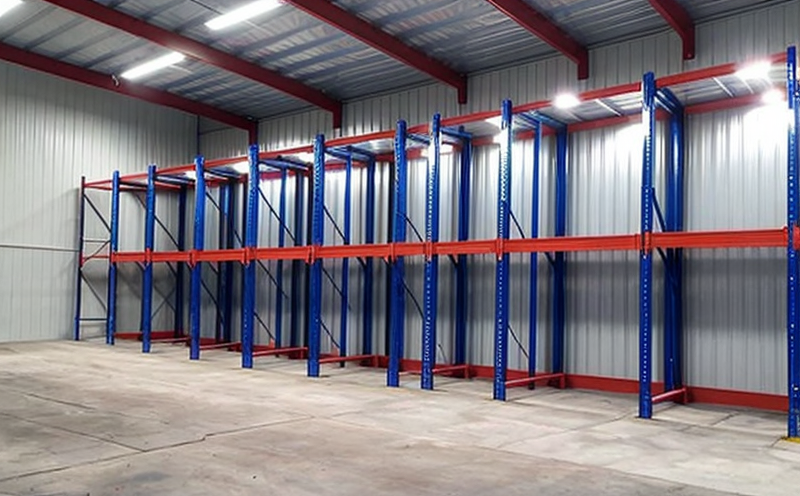Mobile racking inspection
The inspection of mobile racking systems is a critical component in ensuring the safety and efficiency of storage facilities. Mobile racking refers to racks that are designed to move along tracks, allowing for compact storage solutions and easy access to stored materials. These systems are widely used in warehouses, distribution centers, and manufacturing plants where space optimization and quick inventory retrieval are essential.
Given the dynamic nature of mobile racking, regular inspections are necessary to identify potential issues that could lead to structural failures or operational inefficiencies. The inspection process involves a comprehensive evaluation of the rack's components, including columns, beams, track systems, and connectors. Compliance with relevant international standards such as ISO 15738:2016 ensures that the inspection meets industry best practices.
The primary goal of mobile racking inspections is to prevent accidents caused by structural failures or improper operation. By adhering to strict safety protocols, companies can avoid costly downtime and potential liability issues. The inspection process typically includes visual assessments, dimensional checks, load testing, and non-destructive testing methods like ultrasonic flaw detection.
Quality managers responsible for overseeing these inspections must ensure that the process is conducted by certified professionals using appropriate equipment. This ensures accuracy and reliability of results. Compliance officers also play a crucial role in ensuring that all inspections are carried out according to regulatory requirements, which may vary depending on local standards like OSHA or relevant ISO guidelines.
R&D engineers involved in designing new mobile racking systems can benefit from regular inspection reports as they provide valuable insights into real-world performance. Procurement teams might use the findings during vendor selection processes to ensure that suppliers meet stringent quality criteria.
Scope and Methodology
| Description | Details |
|---|---|
| Visual Assessment | Inspect all visible parts for signs of wear, corrosion, or damage. |
| Dimensional Checks | Measure critical dimensions to ensure compliance with design specifications. |
| Loading Capacity Test | Determine the maximum load that can be safely supported by each section of the rack. |
| Non-Destructive Testing (NDT) | Use techniques like ultrasonic testing to identify internal flaws without damaging the structure. |
| Step | Action | Outcome |
|---|---|---|
| Data Collection | Gather necessary information about the rack's history, usage patterns, and any previous issues. | Comprehensive dataset for analysis. |
| Inspection Planning | Create a detailed plan outlining inspection procedures, resources required, and timelines. | Structured approach to minimize disruption. |
| Execution | Conduct inspections based on the planned schedule using appropriate tools and techniques. | Detailed documentation of findings. |
| Reporting | Compile a report summarizing all observations, recommendations for repairs or replacements, and compliance status. | Useful guide for decision-making processes. |
Quality and Reliability Assurance
The quality and reliability of mobile racking inspections are paramount to maintaining safe and efficient storage environments. Ensuring that these systems meet the required standards helps in preventing accidents, reducing maintenance costs, and extending the lifespan of the facilities.
One key aspect is ensuring that all inspectors are certified by recognized bodies such as ASME (American Society of Mechanical Engineers). This certification guarantees their expertise in performing rigorous inspections accurately. Additionally, using advanced technologies like laser scanning can provide precise measurements and detailed images of the racks' condition.
Regular follow-up visits after initial inspections help monitor changes over time and catch emerging problems early. Implementing a robust maintenance program based on inspection results allows facilities to address issues before they become critical. Training programs for staff involved in operation and management also contribute significantly towards enhancing overall safety levels.
Incorporating quality assurance measures into daily operations ensures continuous improvement. This includes establishing clear guidelines, providing adequate resources, and fostering a culture of proactive problem-solving within the organization. By doing so, warehouses can maintain high standards across all aspects related to mobile racking systems.
Use Cases and Application Examples
| Use Case | Description |
|---|---|
| New Installation Verification | Ensure newly installed mobile racking complies with all safety regulations. |
| Periodic Maintenance Checks | Identify potential issues before they escalate into major problems. |
| Rack Modification Assessments | Evaluate changes made to existing racks for compliance and stability. |
| Damage Assessment Following Incidents | Determine the extent of damage after accidents or unusual events. |
| Example | Description |
|---|---|
| A large e-commerce company with numerous distribution centers | Conducts regular inspections to maintain optimal storage capacity and ensure worker safety. |
| A manufacturing plant producing sensitive materials | Inspects mobile racks frequently to prevent any potential risks associated with handling hazardous substances. |
| An international logistics provider operating across multiple countries | Adheres strictly to local regulations while maintaining consistent quality standards worldwide. |
| A government agency responsible for public storage facilities | Inspects mobile racks regularly to comply with stringent safety requirements set by regulatory bodies. |





